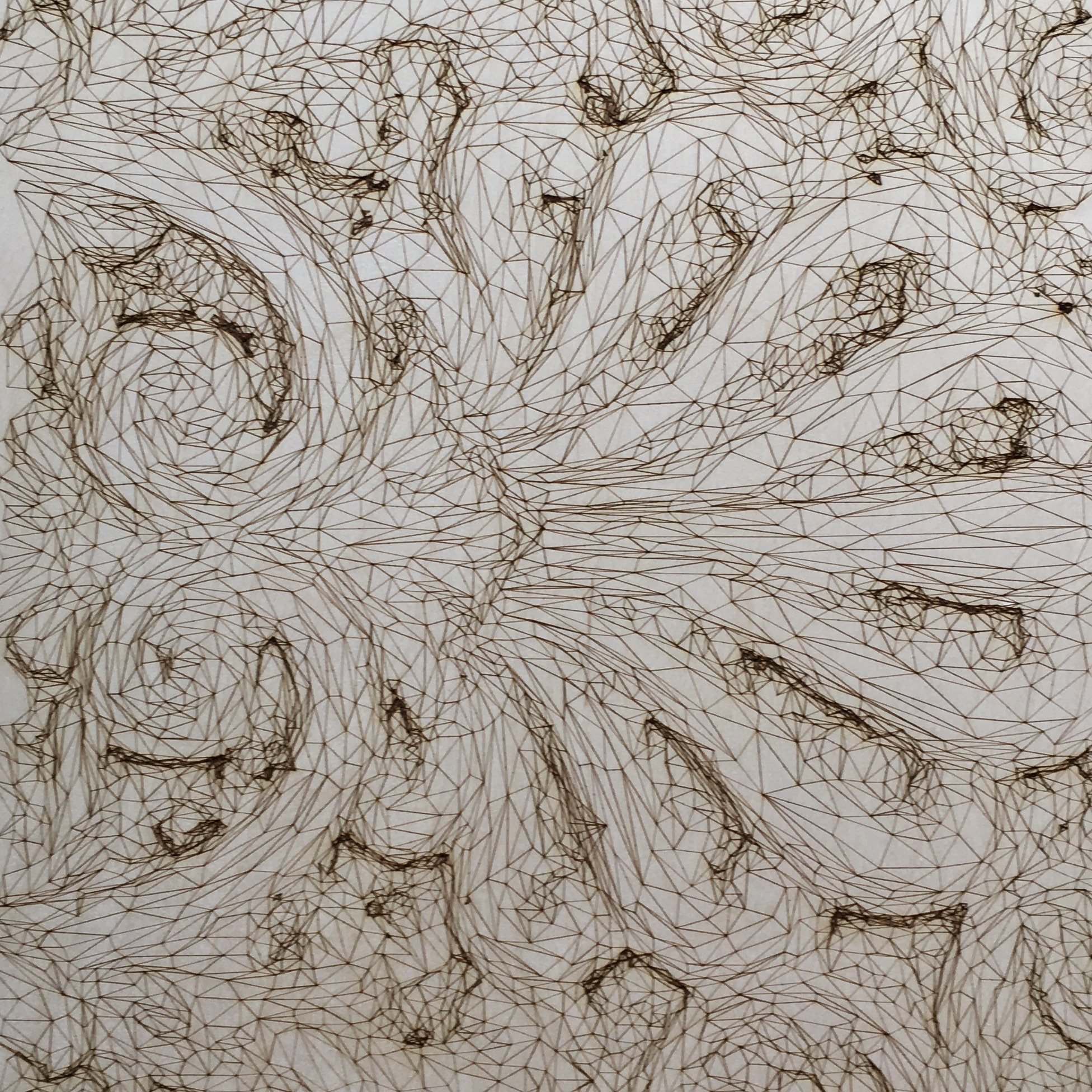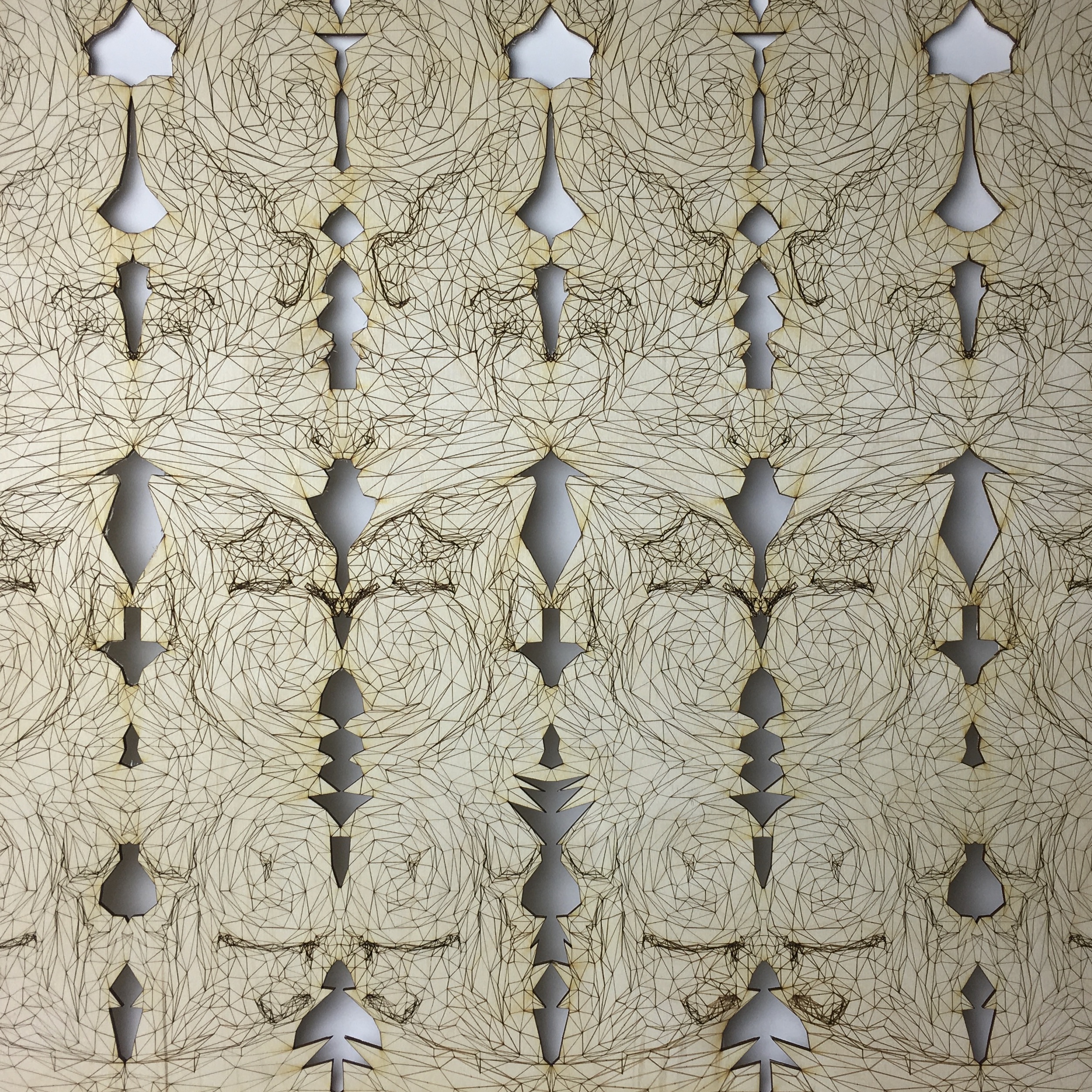4. Image Sampler
When a physical object is scanned, the digital replica will not be a perfect copy of the original, but rather an approximation. If the geometry is further reduced in a 3D-modelling software, information about the original shape is lost. However, this discretization can perhaps bring something new to the object if it is allowed to be high-lighted.
Method
This ornament was made using the Image Sampler in Grasshopper to collect information about depth and shadow. The image sampler divides the image into a finite number of squares defined by a given grid. The luminance value of each square was used to create an extrusion at the corresponding location in the grid. This gives a discrete representation of the image where the height of each extrusion is directly related to the brightness of the image at that location. The extrusions were physically modelled by using layers of 3mm plywood. The original mesh projection was put as the top layer of the extrusions to create a hybrid ”image” where the depth comes from the discretization of the image and the detailing from the 2-dimensional projection of the mesh.
Result and discussion
The physical model turned out a little different from the ambition. The depth effect created from the varying extrusion heights works well to depict the bright/dark areas of the orginal ornament. However, the engraved pattern came out too thin from the laser cutter, making it difficult to read in the final model. Playing around with different settings in the laser cutter could be an easy solution to this problem. Also, one could experiment with laser strength varying across the image to further emphasize contrast. In terms of the artistic ambition with this ornament, I think it is very important to just try things out – creativity comes from experimenting. In this case, the ambition was to emphasize the gap between a “continuous” reality and its “discrete” counterpart in the digital realm.












